- Investigation
- National
- Food safety
This was published 11 months ago
The search for superbugs lurking in your shopping trolley
Authorities are testing for dangerous antimicrobial resistant bacteria in chicken, pork and beef from Australian supermarkets, amid mounting global concerns about the spread of the bugs in the food supply.
It comes as experts have warned a veil of secrecy over antibiotic usage on Australian farms risks damaging our international standing as key trading partners drastically curb their own usage of the drugs.
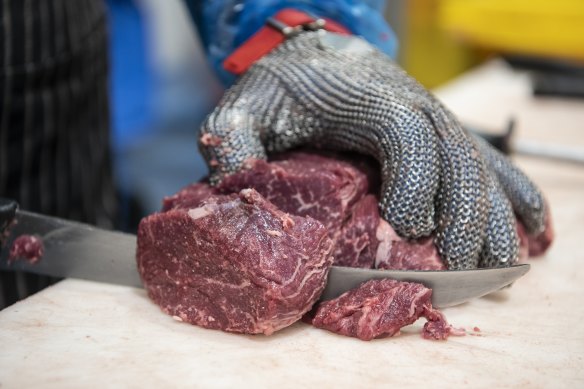
Experts are investigating levels of antimicrobial-resistant bacteria in store-bought meat. Credit: Steven Siewert
While the federal government claims Australia leads the world in combating the problem, it has failed to publicly release any data on antibiotic usage by farmers since 2010.
Professor Peter Collignon, a professor of infectious disease at the ANU Medical School, said Australia was one of the only countries in the world that didn’t make the data readily available to the public.
“We’ve had none of that reporting on a regular basis for over 10 years which I think is highly negligent of the regulator and government,” Collignon said.
“Australia is well and truly behind the game in transparency of data.”
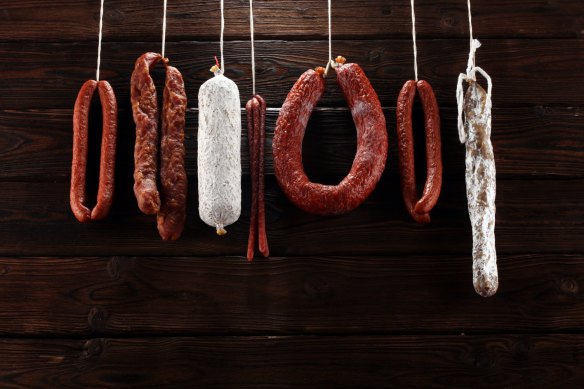
Foods like meat and chicken are being checked for bacteria as health officials express concern about its spread.Credit: beats3
While resistant bacteria in meat can usually be killed off through proper food preparation, in recent years there has been growing concern among scientists over its potential to spill over from the animal world and sicken humans.
This can occur directly through poorly prepared food, close proximity or poor hygiene, according to the federal Department of Health. The bacteria can also transfer from animals into the wider environment via water, faeces or soil, where it poses a risk to humans.
In 2017 and 2018, pet store puppies sparked a severe outbreak of a campylobacter superbug in the United States, striking down 118 people across 18 states.
The silent pandemic
Antimicrobial resistance (AMR) occurs when germs develop resistance to the medications used to kill them, such as antibiotics.
The World Health Organisation has identified AMR as one of humanity’s greatest threats, killing more than 1.2 million people annually with that number projected to soar by 2050.
So-called superbugs are resistant to multiple types of antibiotics, and can cause infections that are nearly impossible to treat. They are jeopardising the health system’s ability to perform life-saving medical procedures that carry infection risks, such as cesarean sections, hip replacements and organ transplants.
One of the main drivers of AMR is the overuse of antibiotics. It’s estimated animals account for about 60 per cent of antibiotic sales in Australia, largely because of their use to prevent and treat disease in livestock destined for supermarket shelves.
Cloak of secrecy
Australia’s failure to publish any data on its farm antibiotic usage since 2010 has raised eyebrows at home and aboard.
A spokeswoman for the Department of Agriculture said Australia shares its antimicrobial sales data with the World Organisation for Animal Health (WOAH), which releases an annual report on usage.
“Australia’s usage remains low by global standards,” the spokeswoman said. “The trend since reporting to WOAH commenced in 2015 has been decreasing.”
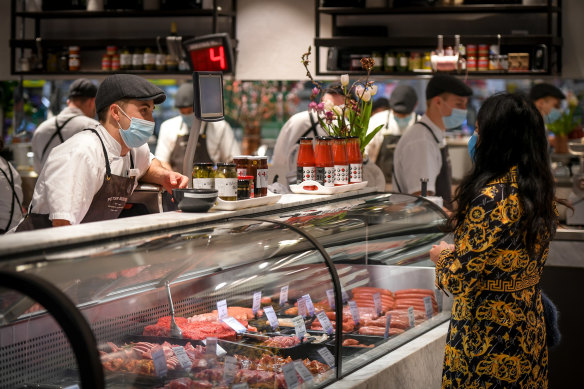
Meat is under the microscope before it gets to your local butcher shop.Credit: Eddie Jim
However, Australia’s actual performance remains a mystery because the WOAH report de-identifies its data.
The report noted that 27 countries made their data publicly available online, including the United States, United Kingdom, Canada, Japan, Italy and New Zealand, along with the European Union. Australia was not among them.
Collignon said the government should produce the hard evidence rather than expecting the public to “take their word for it”.
He believed the government was “trying to appease people who don’t want the data to be made public”.
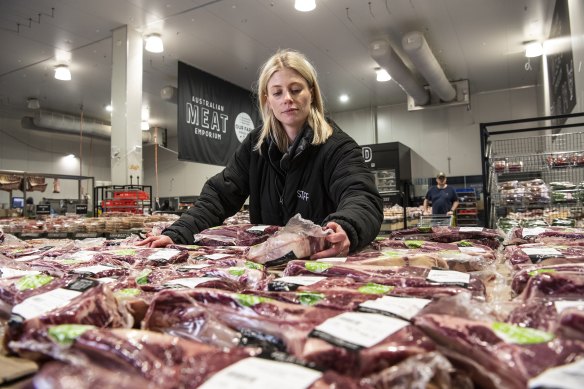
Harriette Greenhalgh, whose father Graham owns Australian Meat Emporium at Alexandria. Credit: Steven Siewert
Save Our Antibiotics, a global alliance working to stop the overuse of antibiotics in farming, raised concerns about Australia’s lack of transparency in a 2020 submission to the British parliament on a proposed trade deal between Australia and the UK.
The alliance’s scientific adviser Cóilín Nunan told this masthead Australia should be publishing data at a farm level, specifying what quantities of antibiotics were used in which species.
“Not publishing any data suggests that Australia is not doing much to reduce its farm antibiotic use,” Nunan said.
In Europe and the UK, the data’s release has motivated farmers to reduce their usage in line with industry averages, he said.
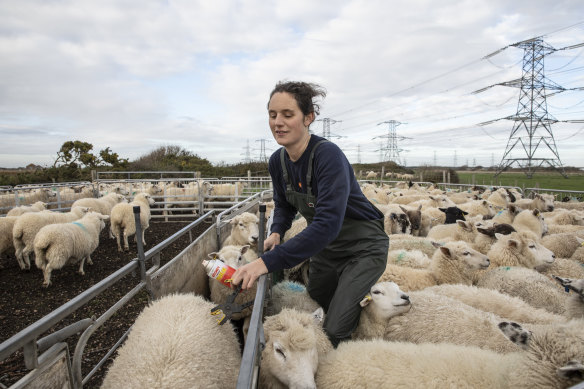
Farmers in Europe like England’s Rona Thompson (pictured) have reduced their usage of antibiotics in animals.Credit: Getty
British farmers have curbed their use of antibiotics in food-producing animals by 59 per cent since 2014, while usage in Europe fell by about 53 per cent between 2011 and 2022.
The Department of Agriculture spokeswoman said any concern about risk to Australia’s trade relationships was unfounded, noting record high agricultural exports last financial year.
The spokeswoman said Australia has one of the most conservative approaches in the world to the use of antimicrobials in food–producing animals.
She noted the department had undertaken a range of surveillance projects in partnership with pork, chicken, fish and egg farmers since 2015 showing their animals had either low or negligible levels of antimicrobial resistance to drugs that were medically important for humans.
‘I can see her jawbone and I’m sharing the same toilet as this person.’
Professor Sam Abraham on his experience with an infected patient in hospital
But several experts told this masthead more extensive mass surveillance needed to be conducted across the farms and abattoirs that stock the country’s supermarket shelves.
Professor David Jordan from Murdoch University, a former principal research scientist at the NSW Department of Primary Industries who has worked with the World Health Organisation, said funding constraints and the remote locations of many farms were still major obstacles to comprehensive testing.
“We want to move some of our products internationally and the standards are changing in this area,” Jordan said.
“We have to ask, are we keeping up? And I’m saying we’re not.”
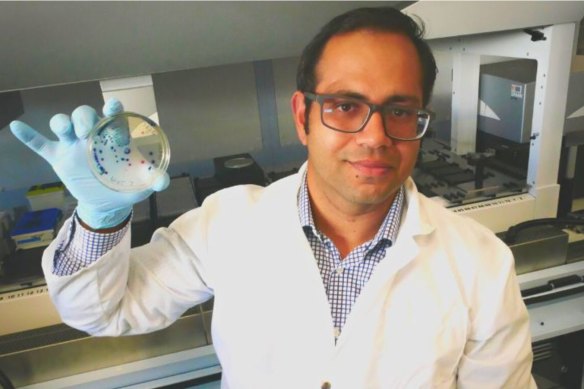
Professor Sam Abraham is one of the country’s leading experts in anti-microbial resistance.
The front line
After Professor Sam Abraham had a brain tumour removed through a hole in his skull, fears of a brush with deadly bacteria in the hospital ward caused him more angst than the operation itself.
His neighbour was being treated for an abscess on her face infected with methicillin-resistant staphylococcus aureus (MRSA): in other words, a superbug.
“I can see her jawbone and I’m sharing the same toilet as this person,” he recalled.
Abraham understood more than most about the dangers of superbugs, as the head of the antimicrobial resistance laboratory at Murdoch University in Western Australia.
“I’m sitting there worrying and washing my hands … I was drenching myself in alcoholic [sanitiser].”
Abraham’s handwashing staved off infection and he has since rejoined the front line of Australia’s war with superbugs.
He is leading a research team commissioned by the federal government to investigate levels of AMR in chicken, pork and beef sourced from supermarkets across Australia, due to report this year.

The FSANZ study will look into the AMR levels in pork, as well as chicken and beef.
Food Standards Australia New Zealand (FSANZ) is funding the two-year survey.
“The food sample collection phase of the AMR survey is now complete … the next phase of the survey involves testing the bacteria isolated from the food samples,” a FSANZ spokesperson said.
“This work provides an opportunity to advance the evidence base for AMR in retail food in Australia.”
Professor Abraham says his experience in hospital is a good example of why we should be concerned about the presence of the bugs in animals.
‘We can transfer resistance from one bug to the other in 15 minutes if the right conditions occur.’
Professor Sam Abraham
“I do an experiment with my 30 veterinary students, we can transfer resistance from one bug to the other in 15 minutes if the right conditions occur,” he said.
Professors Abraham and Jordan agreed there was still uncertainty about how easily bacteria could move between animals, the environment and people.
“It’s probably the biggest issue … that creates the most argument and debate,” Jordan said.
“How much does this bug in this place, how much do its genes move to another bug in another place?
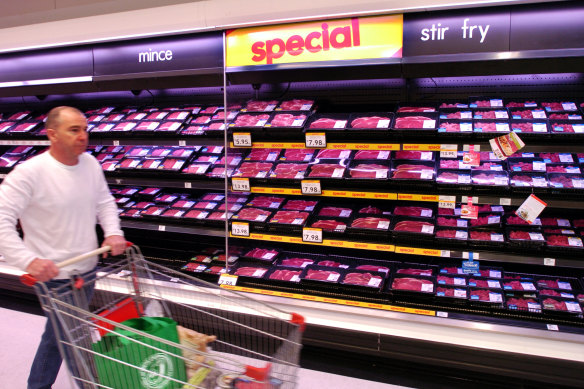
Researchers are trying to stop infected meat from reaching supermarket shelves.Credit: Sean Davey
“My personal take is there’s a hell of a lot of uncertainty there.”
How safe is our meat?
There have been only a handful of attempts to study store-brought produce, with the mixed results sparking controversy among scientists in the field.
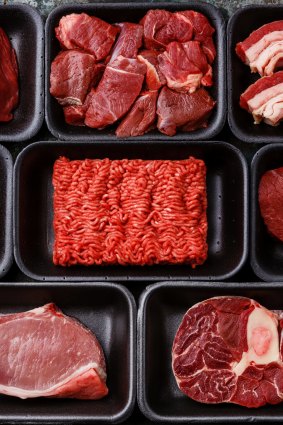
Butchers say governments “don’t like sticking their nose” into meat regulation.Credit: Shutterstock
A 2007 study by government agency Food Science Australia concluded levels of resistant bacteria in retail foods were low by international comparison.
However, three subsequent university studies were less reassuring.
A 2018 ANU study found nearly two thirds of E.coli bugs in chicken samples were resistant to one or more types of antibiotic.
Monash University researchers tested produce from Melbourne supermarkets in 2021, finding 55 per cent of beef samples and 39 per cent of salmon samples harboured bacteria resistant to at least one antibiotic.
In a study published this year by the University of Canberra, pork and meat from supermarkets across NSW and the ACT were sampled. 81 per cent of the bacteria samples harboured resistance to critically or highly important antibiotics and 12 per cent of the bacteria were “superbugs”.
‘We have to ask, what is their role, what is their motivation for being involved?’
Professor David Jordan, on the studies regarding superbugs in meat products which were conducted by animal welfare groups
The latter two studies were funded by animal welfare lobby groups and Professor Jordan said their involvement should be regarded with caution.
“We have to ask, what is their role, what is their motivation for being involved?” he said.
Jordan said it was also crucial that studies were conducted according to internationally recognised methodologies.
“We’d had other studies done earlier, people walking out of their lab in the city collecting the local supermarket samples and using a technique that hasn’t been used much before,” Jordan said.
“It creates more questions and difficulty for us to deal with.”
Professor Glenn Browning, a veterinary microbiologist from the University of Melbourne, said even if AMR was found, it didn’t necessarily originate from the animals themselves.
“It could be somewhere along the chain, someone involved in processing that meat,” he said.
Graham Greenhalgh, the owner of Australian Meat Emporium at Alexandria in inner Sydney, stocks lines of antibiotic-free beef and chicken.
Greenhalgh said his business was very supportive of minimal inputs into meat and tried to offer customers the safest option wherever possible.
“Our business is more about slow grown protein that has less inputs and more flavour and as a result is more expensive but hopefully tastes better and is minimally processed,” he said.
It was ultimately in the hands of the government to drive further change in the mass market and the cheaper end of demand, he said.
“If one of the big guys has an initiative and others don’t follow suit, how long do you stand on your principle of that’s the right thing to do? How long do you let the competitor take the sale?” he said.
He said governments tended to “hate sticking their nose into regulating food” but that saddled retailers with difficult decisions.
A spokesperson for the Australian Chicken Meat Federation said industry policy was that antibiotics deemed critical for human medicine were never used routinely or preventatively.
Margo Andrae, chief executive of Australian Pork, said its surveillance showed no significant increase in AMR levels since 2015.
Cattle Australia’s chief executive, Dr Chris Parker, said use of antibiotics in Australian grass-fed cattle was very low in comparison to the more intensive livestock production systems utilised in other countries.